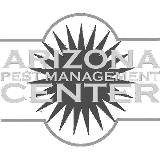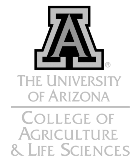Nov 12, 2025
Scout it out, early alert update 2: black rot
The Yuma Plant Health Clinic (YPHC) is receiving an increasing number of black rot cases, confirmed with molecular diagnostics, affecting Brassica/cruciferous crops across Yuma County. This bacterial disease, caused by Xanthomonas campestris pv. campestris (Xcc), is causing severe wilt and necrosis with the help of our recently sunny and warm weather.
The conventional understanding of this pathogen’s transmission is that it is thought to be seed-borne. This mode of transmission was first conclusively demonstrated in a paper published in Phytopathology in 1952 by John Charles Walker, one of the founding fathers of modern plant pathology and author of several of the first comprehensive textbooks on the subject (Cook et al., 1952). He put the Walker in Walker’s Plant Pathology.
Thus, it is true that initial sources for a black rot epidemic can include contaminated seed and infected transplants grown from wherever Xcc is already present. Xcc is globally distributed, meaning sources of inoculum are in no short supply. Worldwide, black rot is one of the leading biotic causes of crop loss in Brassicas. While it isn’t wrong to say that black rot is distributed on seeds and transplants, it’s not the full story either…
Xcc has been shown to survive for extensive amounts of time on crop debris. In 2011, researchers at Wageningen University demonstrated that Xcc could survive on whole Brussels sprouts stalks, either left on the surface or buried in the soil up to 20 cm, for at least 2 years (the total duration of their study) (Köhl et al. 2011). As far back as 1990 Kritzman & Ben-Yephet reported survival times of at least 22 months in cauliflower residue (Kritzman & Ben-Yephet 1990). It is important to note these studies did not look at Xcc survival for longer than two years, so while the survival is known to be up to 2 years, it’s unknown if this is the upper limit of survival on residues. Field studies like these are difficult to perform for more than a few years due to funding constraints, cropping practices, and land availability.
And while Walker famously demonstrated Xcc’s transmission via the seed, he also demonstrated that the bacteria could enter healthy roots from soil inoculum alone (Cook et al., 1952). Subsequently, Alvarez and Cho achieved 90% disease incidence in treated, disease-free cabbage transplants after infesting a clean tenth-of-an-acre field with 14 lbs of infested and minced cabbage stumps and wrapper leaves (1978). Of note, in that same study, only 1 out of every 20,500 commercial cabbage seeds was found to be contaminated with Xcc.
So, couple the long-term survival of Xcc on crop residues with wind or flowing surface waters, natural or via irrigation, and you have a vector for spreading the bacteria whether a Brassica crop is present or only its residue alone.
A further complication surrounding Xcc’s initial origins within and subsequent spread throughout fields is the fact that it can also survive and be transmitted via infected cruciferous weeds (Dubrow et al. 2022). The host range of Xcc includes many, if not all, species in the Brassica genus and several closely related genera. A quick search of SEINET’s flora of Arizona database reveals at least 148 species from the family Brassicaceae widely distributed in the state. A cursory glance reveals even more familiar species that are absent from the herbarium’s list. Shepherd’s purse, camelina, and wild mustard are just three of the common AZ weeds that could potentially be acting as reservoirs with wild mustard confirmed in at least one study (Dubrow et al. 2022).
“Great Chris, so what should I do?” you might ask. Well, one thing that seems to have worked in reducing the chance of Xcc coming from residue is finely chopping infected crops and burying the residue where it has the best chance at decomposing. In another study out of Wageningen Xcc infested cabbage was chopped to a maximum of 15.5 in2 and resulting plant debris was tilled into the soil at a depth of at least 4 inches (Kocks et al. 1998). Eradication of the pathogen occurred at temperatures above 68 °F and, in the Netherlands, could occur between cropping seasons without rotation. How important soil moisture and microbiome differences may play in the decomposition process and subsequent eradication of Xcc is unknown. Subsequent control of cruciferous weeds in fields intended for future Brassica crops is then critical, even in the off-season.
If you have any concerns regarding the health of your plants/crops please consider submitting samples to the Yuma Plant Health Clinic for diagnostic service or booking a field visit with me:
Chris Detranaltes, Ph.D.
Cooperative Extension – Yuma County
Email: cdetranaltes@arizona.edu
Cell: 602-689-7328
6425 W 8th St Yuma, Arizona 85364 – Room 109
Sources:
To access SEINET’s database, use the following link (accessed 11/10/2025):
https://swbiodiversity.org/seinet/
Alvarez, A. M., Cho, J.J.. “Black Rot of Cabbage in Hawaii: Inoculum Source and Disease Incidence.” Phytopathology 68.10 (1978): 1456. Web.
Cook, A., Larson, R. H., and Walker, J. C.. Relation of the black rot pathogen to Cabbage seed. Phytopathology, 42(6), 316-320 (1952).
Dubrow, Zoë E et al.. Cruciferous Weed Isolates of Xanthomonas Campestris Yield Insight into Pathovar Genomic Relationships and Genetic Determinants of Host and Tissue Specificity. Molecular plant-microbe interactions, 35(9), 791–802. (2022).
Kocks, C.G. et al.. Survival and Extinction of Xanthomonas Campestris Pv. Campestris in Soil.”European journal of plant pathology, 104(9), 911–923 (1998).
Köhl, J et al.. Survival of Pathogens of Brussels Sprouts (Brassica Oleracea Gemmifera Group) in Crop Residues. Plant pathology, 60(4), 661–670, (2011).
Kritzman, G., Ben-yephet, Y.. Control by metham-sodium of X
anthomonas campestris pv.
campestris and the pathogen’s survival in soil.
Phytoparasitica 18, 217–227 (1990).
https://doi.org/10.1007/BF02980991

















